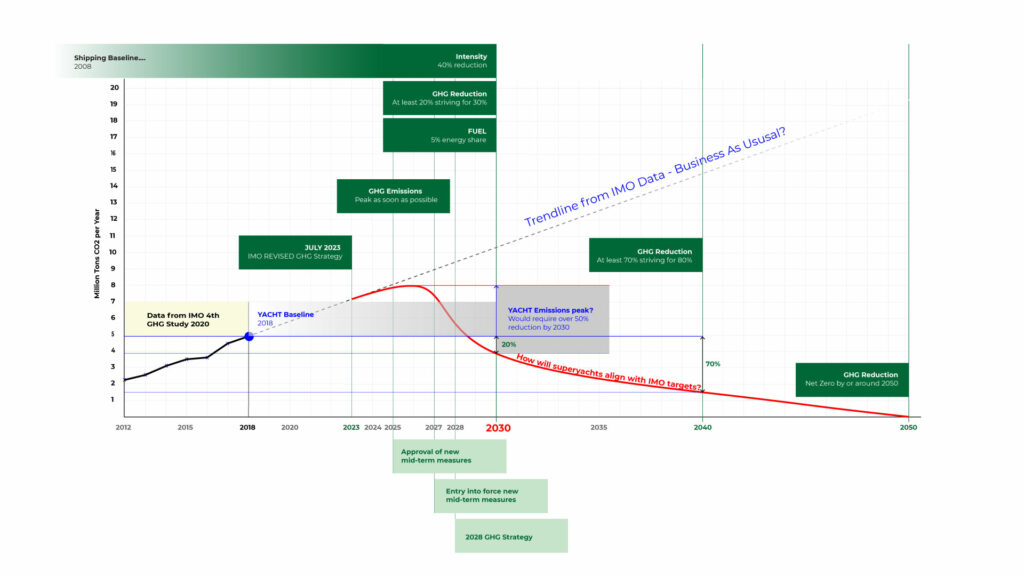Superyachts are but a small part of the wider maritime industry and although they are exempt from many of the regulations related to energy efficiency and reduction of Green House Gas (GHG) it is clear that yachts will need to align with the ambitions of the IMO if it is to be seen as a responsible industry.
On July the 7th the IMO published its 2023 Green House Gas (GHG) Strategy. This includes more ambitious targets to reduce GHG from shipping and changes include the following:-
- To peak GHG emissions from international shipping as soon as possible and to reach net-zero GHG emissions by or around 2050
- Reduce total annual GHG emissions by at least 20%, striving for 30% by 2030 compared to 2008
- Reduce total annual GHG emissions by at least 70%, striving for 80% by 2040 compared to 2008
In addition, they will be strengthening the energy efficiency design requirements and developing a GHG emissions pricing mechanism (carbon tax). These will be phased in, in the coming years – how new mandatory regulations will affect yachts is unclear at the moment.
Along with the IMO Stretagy there are also National and regional rules from U.S., UK and EU including the EU ETS (carbon tax) for shipping, Fuel EU Maritime, expansion of NOx ECA’s and banning of fossil fuel powered vessels in the World Heritage Norwegian Fjords. It is unlikely that the superyacht industry can remain outside the scope of these regulations for ever.
The data from the IMO GHG studies is the only benchmark we have for our industry. If we extend the trendline the scale of the challenge is obvious. Part of the reason for year-on-year growth is the fleet continues to grow with few yachts being scrapped. It does not include reduced emissions due to the COVID period and/or any improvements in efficiency of new yachts but neither does it include shore power consumption and it’s carbon intensity.
2008 is the shipping industry baseline, I used 2018 for yachts, even then you can see by 2030 we would need to peak our emissions in the next few years and require approx. 50% reduction in emissions to align with the new goals – clearly, the longer we delay, the harder it will be.
This highlights there is significant work to do, some of this will come from more energy efficient yachts, adoption of new technologies and fuels, in particular HVO for legacy vessels, and operational changes such as slowing down, that reduce consumption.
But…this will all be meaningless if we do not start collecting emissions data (by Flag or independent organization) so we can benchmark the industry and demonstrate positive change. I’m sure it’s there, but it’s madness that we do not know by how much!
Is this the moment the industry rises to the challenge?





